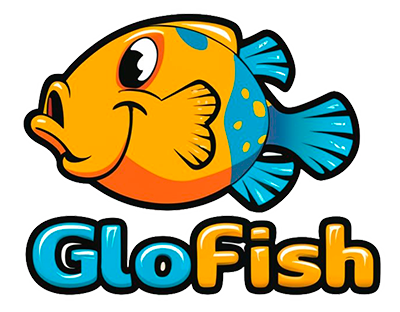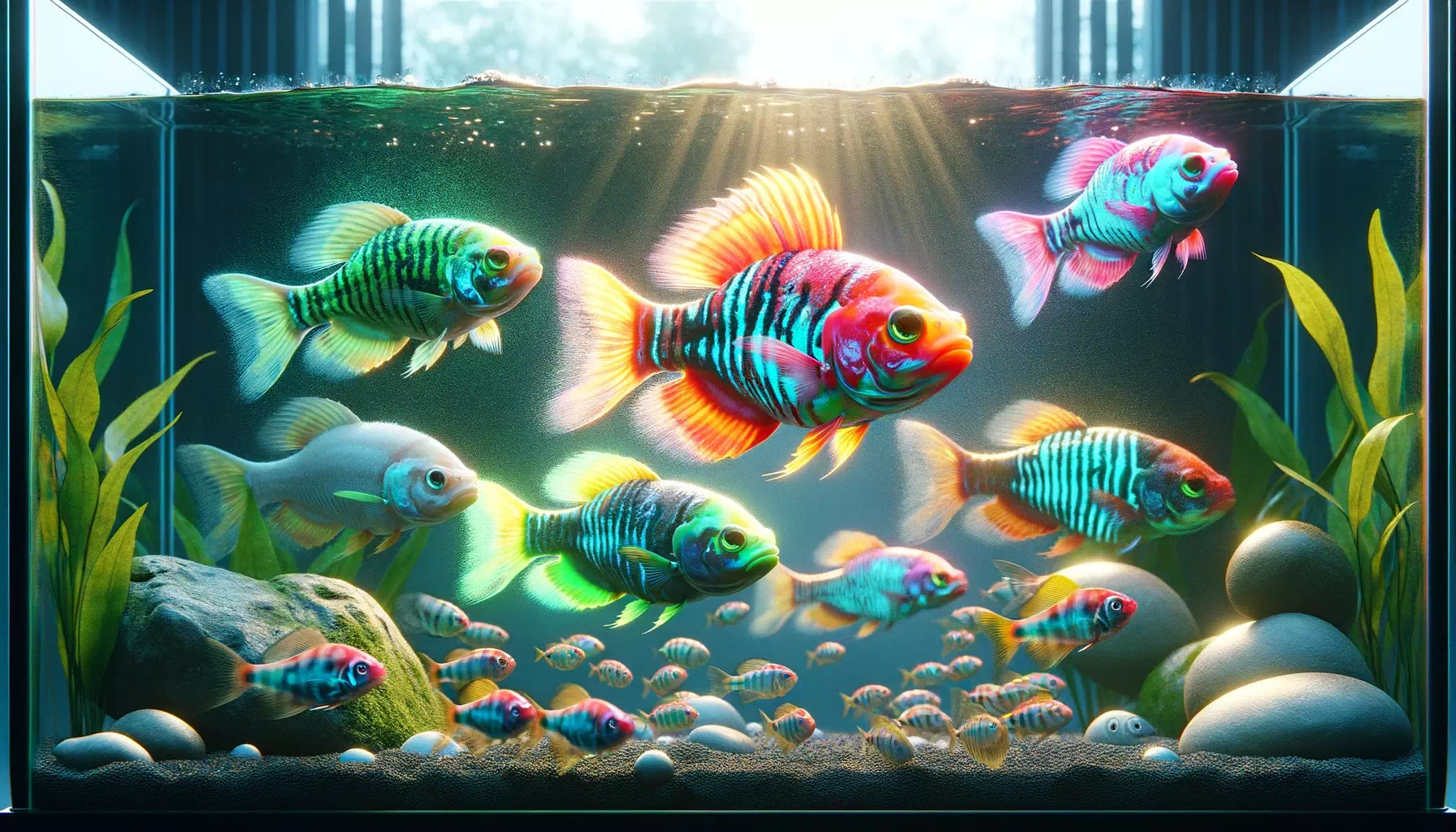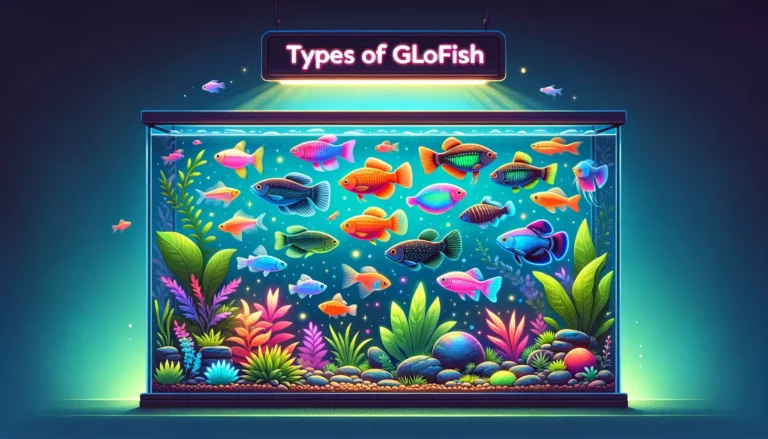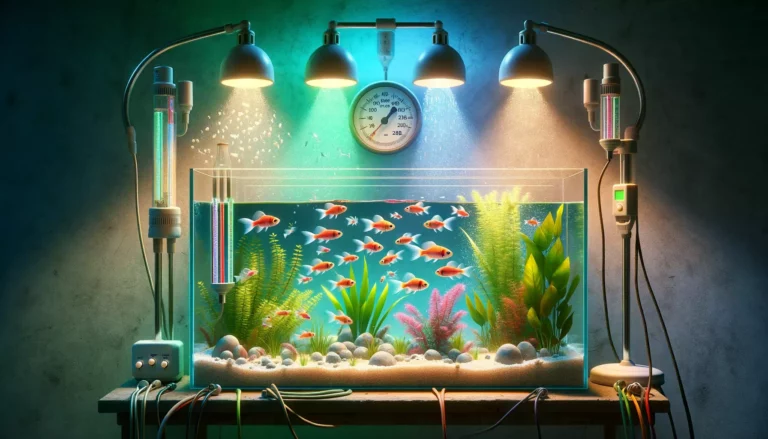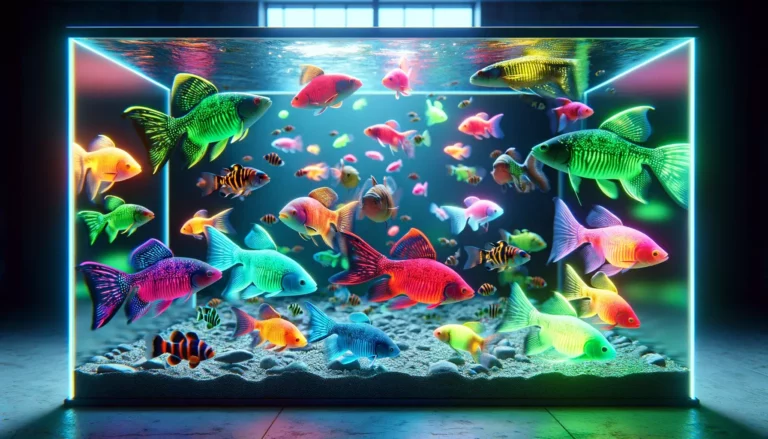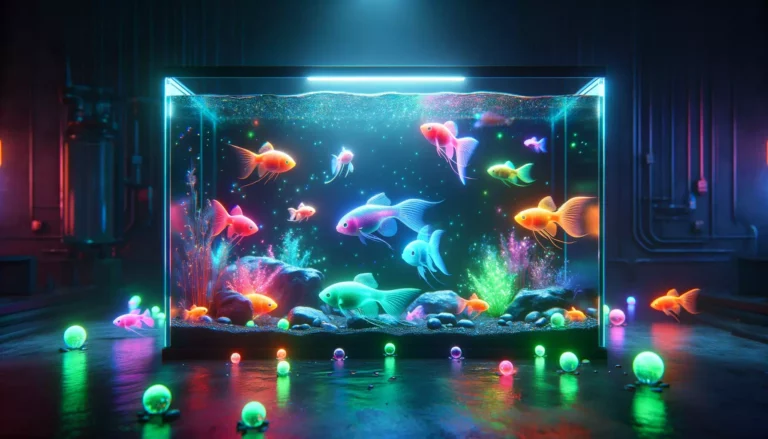Original Names of Species Later Transformed into GloFish
Selected Species for the Creation of the First GloFish
The journey of GloFish began with selecting specific fish species. The first species chosen was the Zebrafish, scientifically known as Danio rerio. This species was ideal due to its well-understood genetics and its clear, almost transparent body. These characteristics made it easier to observe the genetic changes.
The choice of the Zebrafish was also influenced by its hardiness and adaptability. These fish are known for their ability to thrive in various environments. This made them suitable for both research and later, as pets. Their small size and peaceful nature added to their appeal.
Later, other species like Tetras and Barbs were also transformed into GloFish. Each of these species was chosen for similar reasons – clear visibility of genetic modifications, ease of care, and a peaceful demeanor. These attributes made them perfect for both scientific study and the aquarium trade.
Basis of Initial Names for GloFish Predecessor Species

The initial names for GloFish predecessor species have interesting origins. Names often reflected physical characteristics or habitats. For example, the name ‘Zebrafish’ comes from its zebra-like stripes. These stripes are prominent and a key identifying feature of the species.
Other species, like Tetras and Barbs, also had names based on their features. Tetras, for instance, are named for their unique fin structure. ‘Tetra’ means ‘four’, referring to their four distinct fins. Barbs got their name from the barbels or whisker-like structures near their mouths.
| Species Name | Basis of Name | Explanation |
|---|---|---|
| Zebrafish | Zebra-like stripes on its body | Named after its prominent zebra-like stripes |
| Tetras | Unique fin structure | Named after their four distinct fins |
| Barbs | Barbels near their mouths | Named after the whisker-like structures near their mouths |
Understanding these names is crucial for beginners in fish-keeping. It helps in recognizing species and understanding their natural behaviors. Such knowledge is fundamental when creating a healthy aquarium environment for these fish.
Name Changes Post-Modification into GloFish
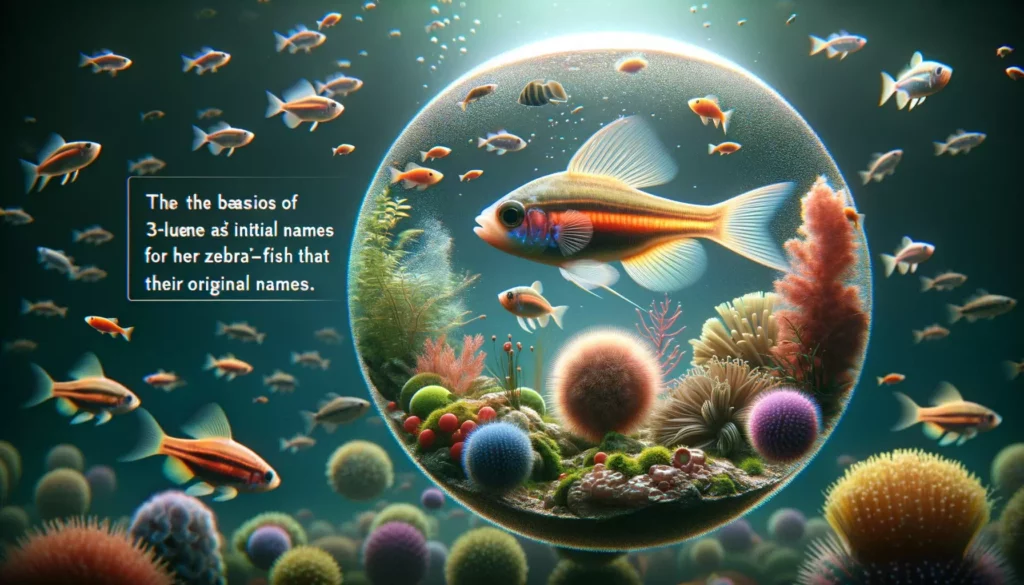
After the transformation into GloFish, the naming conventions shifted to highlight their new, unique traits. The original names, like Zebrafish, were retained, but with an added emphasis on their altered appearance. The names now reflect the vibrant colors and glowing aspect of these genetically modified fish. For instance, a genetically altered Zebrafish with a red glow might be referred to as a “Red GloFish Zebrafish.”
This change in naming helps distinguish the modified fish from their natural counterparts. It also aids in marketing, making these fish more appealing to the aquarium hobbyists. The names often include the color of the GloFish, such as “Electric Green,” “Sunburst Orange,” or “Moonrise Pink,” followed by the original species name.
It’s important for beginners to understand these names for proper identification and care. Knowing the distinction between the natural and modified versions of a species can influence care requirements, especially in terms of lighting and tank setup.
Scientific Names Prior to GloFish Transformation
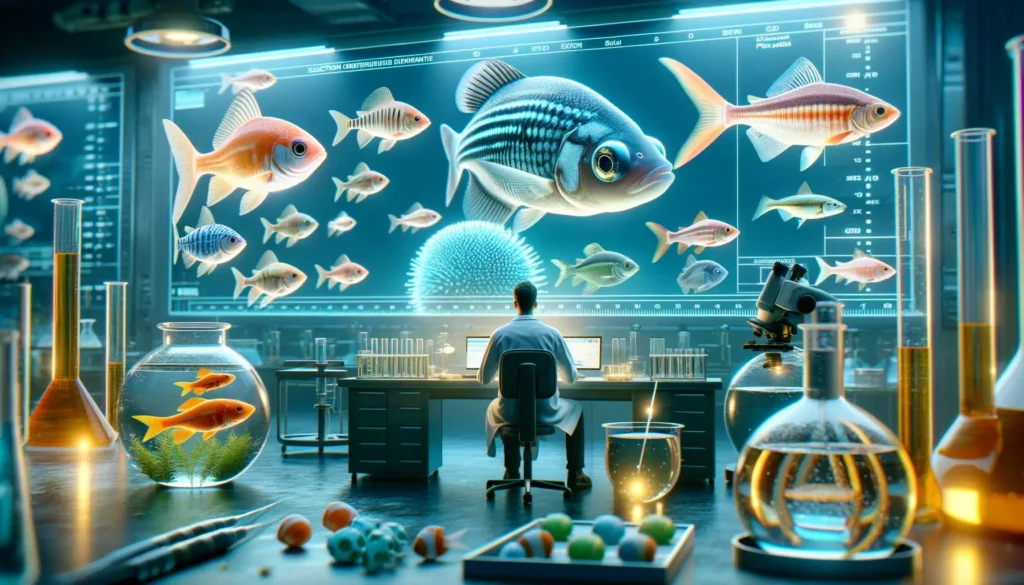
The scientific names of the fish species used for GloFish creation have remained unchanged post-modification. These names are crucial for scientific classification and research. The Zebrafish, for example, is still known as Danio rerio in scientific circles. Similarly, Tetras and Barbs retain their scientific nomenclature, such as Paracheirodon innesi for Neon Tetras and Puntigrus tetrazona for Tiger Barbs.
Understanding these scientific names is beneficial for aquarium enthusiasts. It helps in researching the specific needs and characteristics of each fish. This knowledge is particularly important for maintaining a healthy aquarium, as it guides the selection of compatible species and appropriate care.
For beginners, recognizing both the common and scientific names enhances their understanding of the fish’s origin, natural habitat, and behavior. This dual knowledge is key in creating a thriving, balanced aquarium ecosystem.
Historical and Cultural Influences on Original Fish Species Names
The original names of fish species often have roots in history and culture. These names reflect aspects like appearance, habitat, or local folklore. The Zebrafish, or Danio rerio, is a prime example. Its name is derived from the striking zebra-like stripes on its body. This naming convention is common in many cultures, where local names often describe physical traits or behaviors of the species.
Another aspect influencing these names is the fish’s native habitat or region. For instance, the Neon Tetra, native to South American rivers, is named for its bright neon-like stripes. This naming tradition helps in identifying and classifying species based on their origins.
| Species Name | Basis of Name | Historical and Cultural Influence |
|---|---|---|
| Zebrafish (Danio rerio) | Zebra-like stripes on its body | Reflects a common naming convention describing physical traits |
| Neon Tetra | Bright neon-like stripes | Named based on its appearance and native habitat in South America |
For beginners in aquarium keeping, understanding these historical and cultural influences can be fascinating. It adds a layer of appreciation for the diversity and history of aquatic life. Recognizing the origins of these names also helps in understanding the natural behaviors and habitats of these species.
Most Popular Fish Species for GloFish Transformation and Reasons
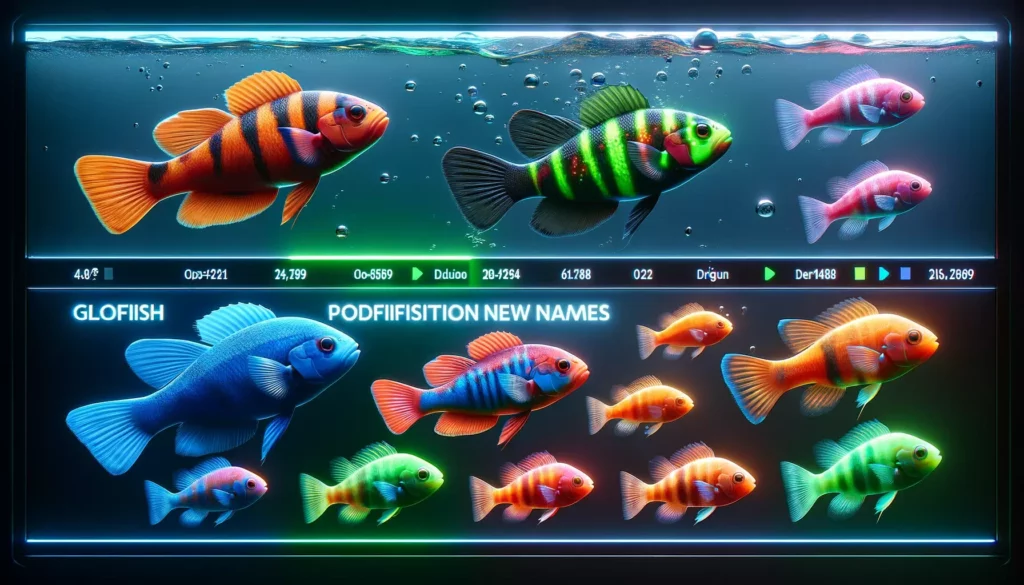
The most popular fish species for GloFish transformation include Zebrafish, Tetras, and Barbs. The popularity of these species is due to their distinctive features and adaptability. Zebrafish, with their transparent bodies and hardy nature, were the first to be transformed. They are ideal for observing genetic modifications and are easy to care for, making them a favorite among scientists and hobbyists.
Tetras, particularly the Neon Tetra, followed due to their vibrant natural colors and small size. Their transformation into GloFish added even more appeal to their already striking appearance. Barbs, like the Tiger Barb, were chosen for their distinctive patterns and ease of breeding in captivity.
These species are favored for their adaptability to aquarium life and their compatibility with other fish. They are suitable for both novice and experienced aquarium enthusiasts. The transformation into GloFish has not only added aesthetic value but also sparked interest in genetics and conservation among the public.
Selection Criteria for Fish Species in GloFish Development
When selecting species for GloFish development, several key criteria are considered. Ease of genetic modification and visual impact of changes are paramount. The chosen species must have a genetic makeup that allows for successful integration of fluorescent genes. This is essential for the distinct glowing effect GloFish are known for.
Another crucial factor is the fish’s adaptability to aquarium life. Species that are hardy and can thrive in a controlled environment are preferred. This ensures their well-being in both research settings and home aquariums. Compatibility with other species is also a consideration, as GloFish are often kept in community tanks.
For beginners, understanding these criteria can guide responsible GloFish keeping. It helps in appreciating the science behind these beautiful creatures. Also, it promotes awareness of the ethical aspects of genetic modification in pets.
Behavioral and Appearance Changes in Fish Post-GloFish Transformation
Post-transformation, GloFish exhibit significant changes in appearance while maintaining most of their original behavior. The most noticeable change is their vibrant, fluorescent coloration. This is a result of the insertion of genes from naturally bioluminescent organisms. The colors can range from neon green to bright red, depending on the gene used.
Behaviorally, GloFish tend to exhibit similar traits to their non-modified counterparts. However, their striking appearance can sometimes affect their interactions with other fish. For instance, their bright colors might make them more visible to predators in a natural setting.
For beginners in fish-keeping, it’s important to understand that despite their altered appearance, GloFish have similar care requirements as their non-modified versions. This includes diet, tank conditions, and social interactions with other fish.
Classification of GloFish Species Versus Original Species
The classification of GloFish versus their original species remains largely the same in scientific terms. GloFish retain their original species’ scientific names despite genetic modifications. For example, a GloFish derived from a Zebrafish is still classified scientifically as Danio rerio. The genetic modifications for fluorescence don’t change the fundamental species classification.
However, in the pet trade and among aquarium enthusiasts, GloFish are often categorized separately due to their unique appearance and the technology used to create them. This distinction is important for understanding the special considerations in their care and breeding.
For beginners, recognizing that GloFish are genetically modified versions of existing species helps in researching and understanding their needs. It ensures that these beautiful, modified creatures receive appropriate care while respecting their natural heritage.
